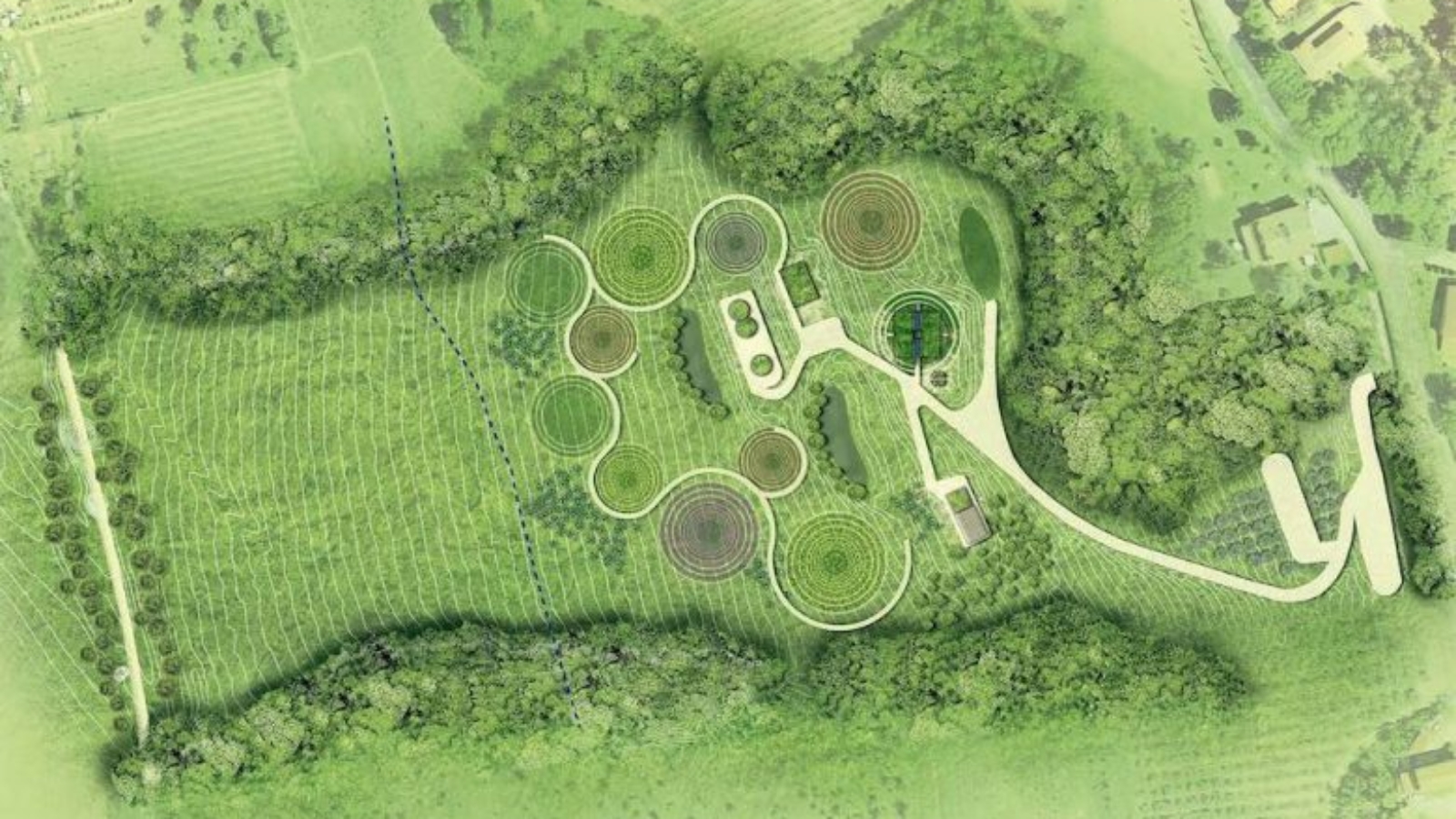Italian company WASP has become known for its 3D printing hardware, particularly its clay and cement printing platforms that have unlocked numerous creative projects, like a sensory garden and coral reef modules. Some may not know, however, that the company has since its early days been driven by a utopian dream of building Shamballa, a place where 3D printing could be used to build community and provide the fundamentals to human life: housing, food, healthcare, energy, employment and culture.
According to the company, its hardware solutions were all developed in line with this overall vision,—hardware solutions like the Crane WASP, a large-scale construction 3D printer designed to use local materials for on-site builds such as the TECLA 3D printed house designed in collaboration with Mario Cucinella Architects. Now, the ambitious Shamballa project is starting to take shape in the hills of Northern Italy.

The open-air 3D printing laboratory will cover eight hectares of previously uncultivated farmland. On this land, WASP has many plans in the works, all in line with its sustainable, utopian ethos. These plans include a medicinal botanical with 50,000 plants, an orchard with over 500 local fruit trees, and various 3D printed infrastructure projects. The first of these infrastructure projects are Itaca, the first self-sufficient 3D printed farm (slated to break ground in September 2025), and a 3D printed conference hall with a green roof that will be used as a venue for educational activities, public events and more.
Manufacturing on Demand
The open-air laboratory will also be the site of various explorations into energy-efficiency housing solutions as well as structures like rest areas and sanitary facilities. Other projects to be undertaken at Shamballa include micro-architectures designed to increase biodiversity, such as shelters for insects and microfauna.

“After more than two years of preparatory work, Shamballa is now in its final construction phase, with the opening scheduled for spring 2026,” WASP says. To date, the company has invested over €1 million into its sustainable vision, which it hopes will demonstrate how technologies like 3D printing can have a positive impact on the world. The ambitious sustainability-driven project is spearheaded by WASP 3D Build, the startup founded by WASP dedicated to 3D printing construction initiatives, in partnership with Olfattiva, both part of the CSP S.r.l. group.
In the broader construction industry, 3D printing technologies are increasingly being explored as a more sustainable building solution, which can minimize construction waste materials, build more efficiently, and be used to address the high costs of housing. For example, a number of cities have successfully built social housing units using 3D printing, showcasing the impact the technology could have for sustainable housing solutions, in all senses of the word.
You might also like:
ICON releases affordable 3D printed homes in Austin: The affordable one-bedroom homes for income-qualifying individuals were designed to maximize space without compromise. The first floor seamlessly integrates living, dining, and kitchen areas, creating an open and efficient layout. The homes feature standing seam roofs, private entrances, and complimentary finishes.
* This article is reprinted from 3D Printing Media Network. If you are involved in infringement, please contact us to delete it.
Author: Tess Boissonneault


Leave A Comment